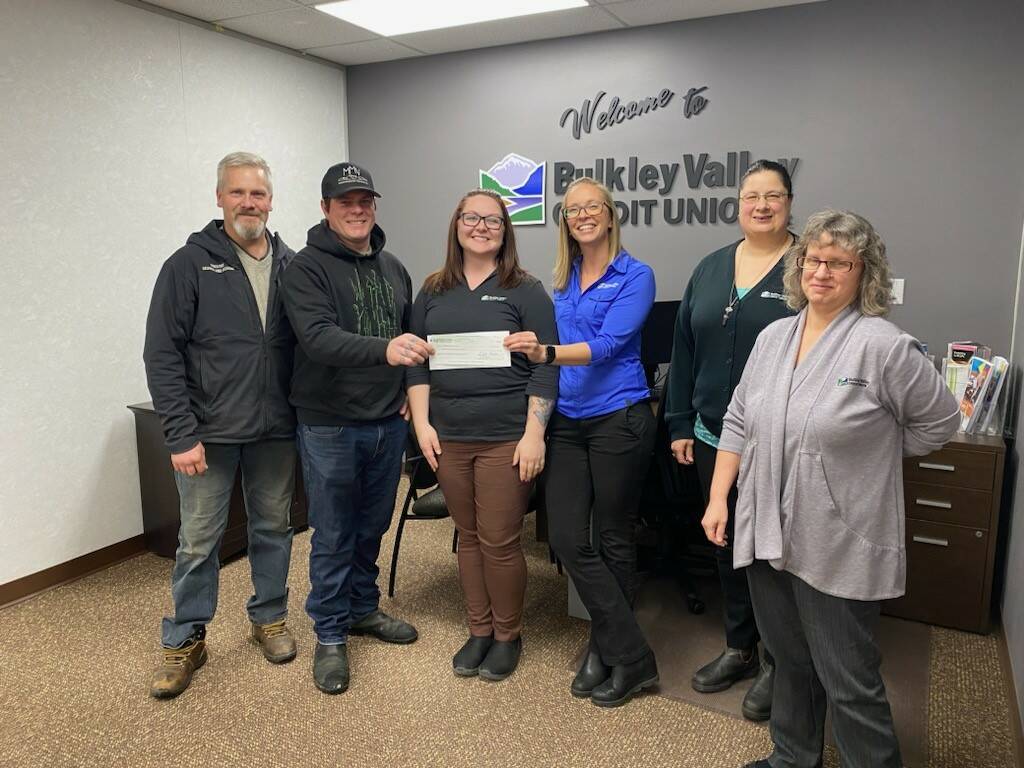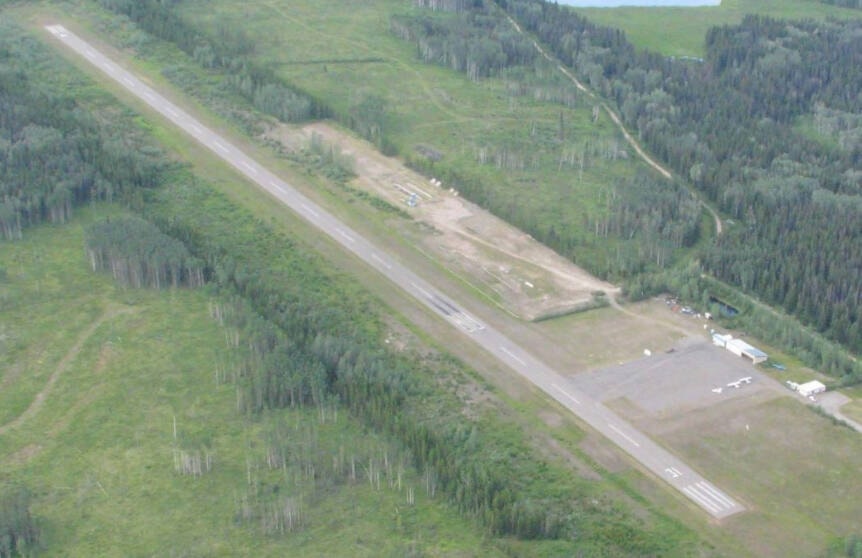The Houston Flying Club is charting out a future for the District of Houston-owned airport 12km west of the community.
Through three phases, the club wants an upgrade of the building at the airport, wants brush and other vegetation cleared from around the runway and wants to set out a work plan to resurface the runway.
With the support of the District of Houston council, the club is applying for a federal grant to provide $80,000 out of an estimated $100,000 needed for all three phases.
“The runway sides have grown in with small trees along the sides of the runway and on the approach on both ends of the runway,” said club secretary/treasurer Sue Jones of current conditions.
“There are Canadian aviation regulations that outline how close obstacles can be to the runway and the clearance on the approaches. This ingrowth doesn’t meet the obstacle-free requirements.”
The building at the airport is three older Atco trailers joined together with an interior, including showers and washrooms, needing an overhaul.
But the most complicated and expensive part of the flying club’s overall plan would be resurfacing the 3,999 foot-long runway which was first paved in 1988.
“The runway is aging Plants are starting to poke through the cracks along the surface. The asphalt has started the drying [and] crumblin of unsealed pavement,” indicates background information presented to council.
The condition of the runway emerged as a key factor in a 2016 review of the airport commissioned by the District.
In 2017 dollars, the review estimated resurfacing of the runway and taxiway would cost $1.2 million.
Updating that cost would form part of the third phase of the club’s work plan.
Also part of the third phase would be spending $15,000 to install fuel tanks and the infrastructure to sell fuel which would be a key part of making the airport more attractive to recreational pilots.
“We hope to make the facility more welcoming and useful to all the pilots stopping at the Houston airport. Pilots are asking for fuel, hangers and a better terminal building with internet,” said Jones.
The Vanderhoof Flying Club has also expressed an interest in running a satellite flight school at the airport and Transport Canada is reviewing its application.
The Houston club does not just want to appeal to the recreational flying community — an improved facility would aid in it being a base for search and rescue training and actual missions, said Jones.
Mug bog events and drag races also take part at the airport and one of the items on the club’s ‘to do’ list is speaking with drag racers about replacing burn out strips.
The club’s three-phase plan marks a revival of the local flying community and it now has 12 members with three of them having planes based at the airport.
While a successful grant application would provide $80,000 of the $100,000 three-phase work plan estimate, the club will have to provide $10,000 in cash and $10,000 in-kind work.
The Bulkley Valley Credit Union has already chipped in with $1,700 to help the club get started with providing internet, to install a webcam and to erect welcoming signs.
Jones said the club will pursue additional grant opportunities to fully flesh out its vision.

